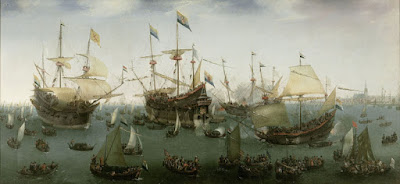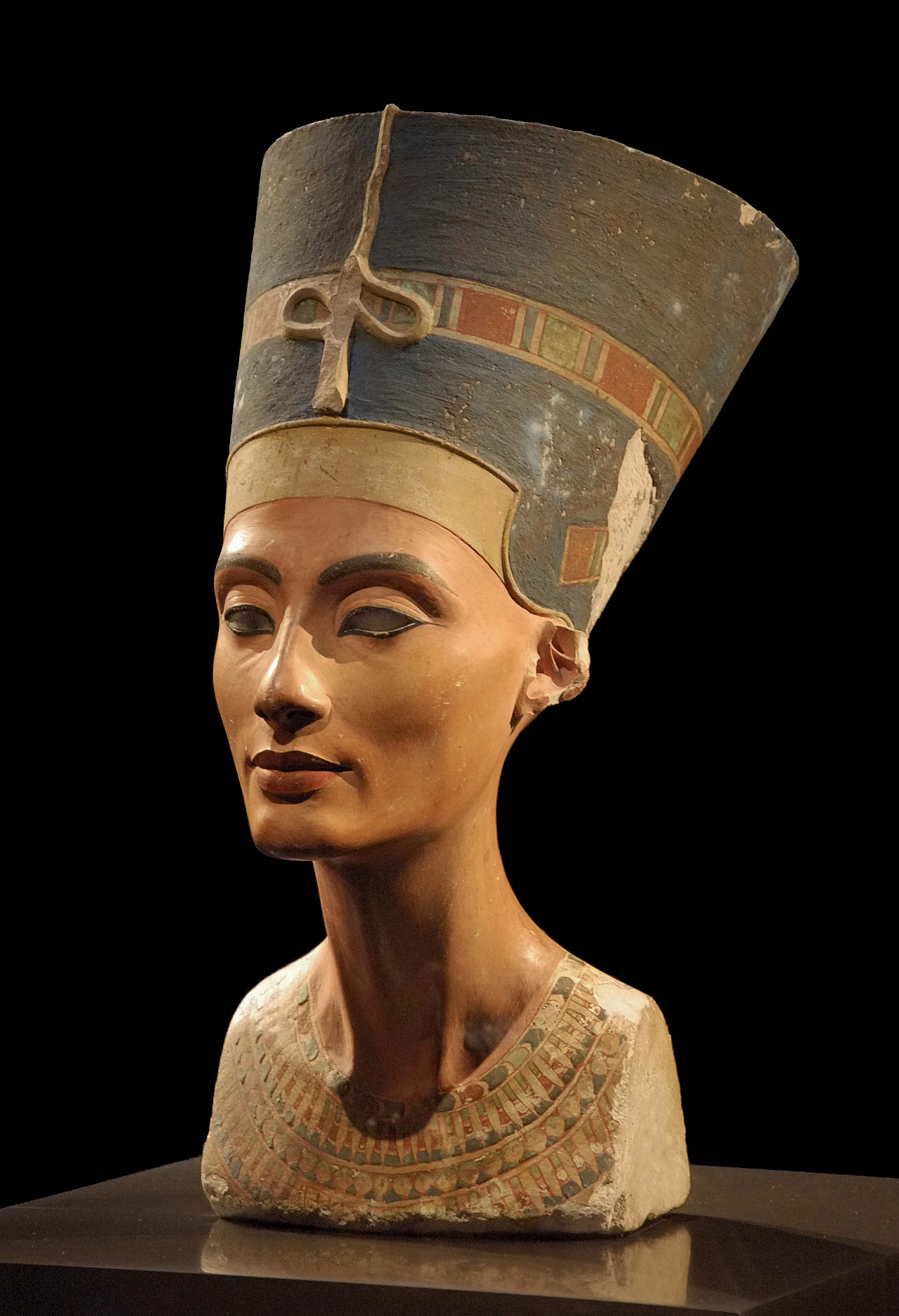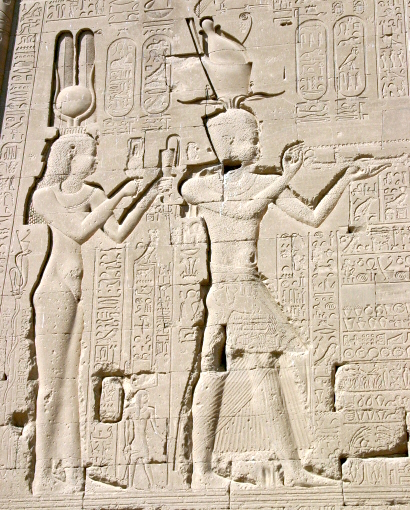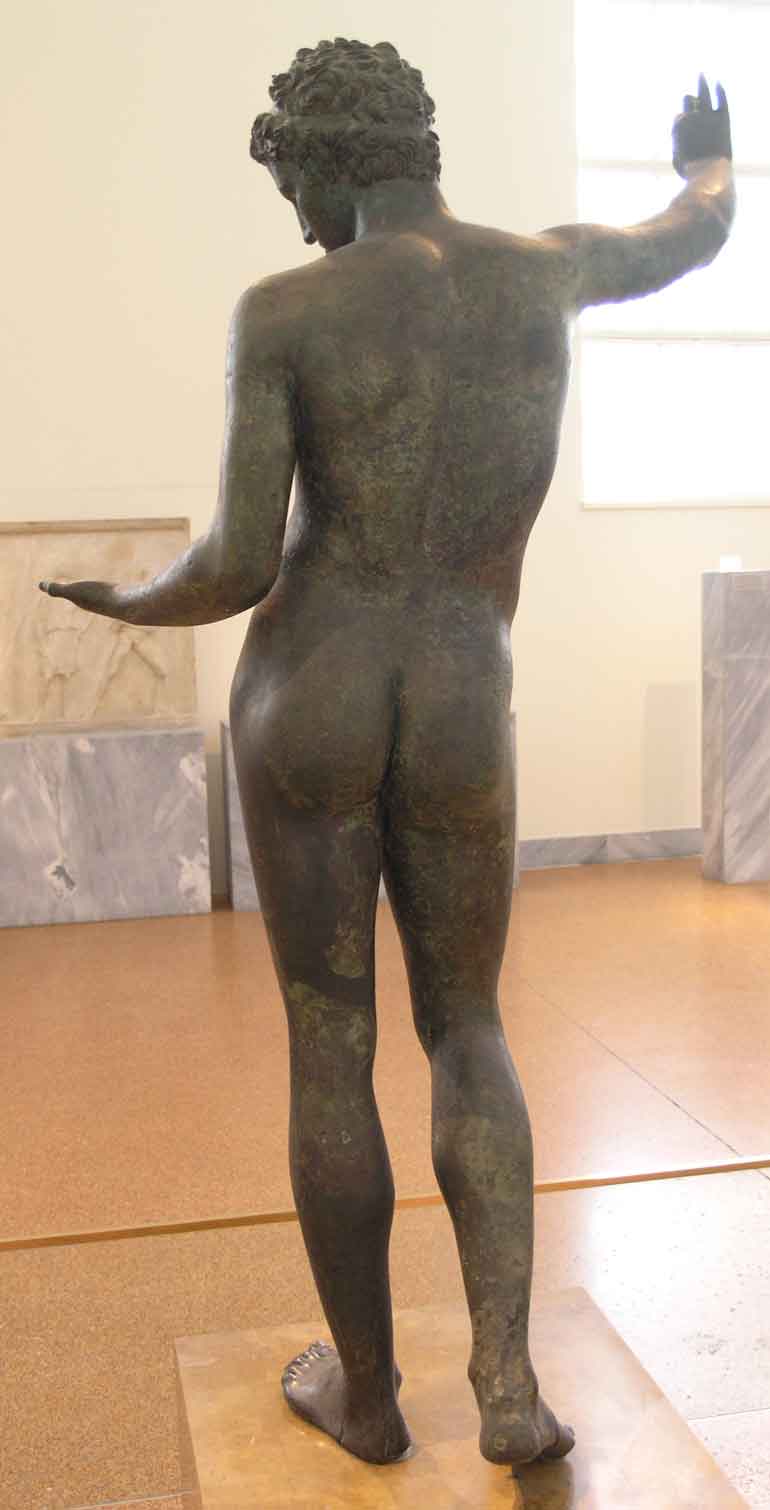We think of art as a form of creative expression. It hasn’t always been that way.
 |
Fowling scene from the Tomb of Nebamun, c. 1350 BC, courtesy British Museum. He’s with his wife, daughter and their tabby cat, relaxing in the afterlife.
|
Contemplating
contrapposto (counterpoise)—
as I did on Wednesday—inevitably makes me think about the art of ancient Egypt.
Contrapposto is the door that separates modern sensibility from ancient thinking. On our side lies personal expression, naturalism, self-direction and change. On the other side was tradition, continuity and ritual. The Egyptians never stepped through.
In fact, looking at Egyptian culture as a whole is like looking at a distorted mirror image of our modern selves. Consider the very useful
Pythagorean theorem. The relationship it describes was known to the Egyptians as early as 2000 BC as lists of numbers, but the ability to upgrade that into a predictive formula was lost on them. We had to wait until around 500 BC for the Greeks. This was not for lack of scientific intelligence, for the Egyptians were great builders, miners, and chemists.
 |
|
Mortuary figurine of a woman; 4400–4000 BC; crocodile bone. The workmanship gets more sophisticated over time, but the character and pose remain unchanged. Courtesy the Louvre.
|
Egyptian culture came into being as people were compressed into the Nile River Valley by desertification. Irrigation supported the development of a stable Egyptian culture. By the
New Kingdom it was very powerful indeed, reaching around
the Levant and down through the Nile Valley.
Egypt was both a fruitful and precarious place to live. Drought and famine were ever-present threats. The Nile, which gave Egypt life, was also home to deadly snakes and spiders, hippopotami and crocodiles. It’s no surprise that theirs was a very structured society. Going outside the rules could be fatal.
 |
Wooden statue of the scribe Kaaper; c. 2450 BC; wood, copper and rock crystal, courtesy Egyptian Museum (Cairo).
|
In fact, order and continuity were the very hallmarks of Egyptian culture. Ancient Egypt was a series of stable kingdoms, divided by short, painful bursts of instability. These are the times we tend to study, because they’re so interesting. Take for example, the
Amarna Period. Around 1350 BC, Amenhotep IV ascended the throne and instituted a series of reforms. He changed his name to
Akhenaten, promoted the sun deity
Aten as the sole deity, suppressed other gods, and moved his capital to the new city of Akhetaten.
But our fascination with the sun-worshipping pharaoh was not shared by his successors. Subsequent pharaohs,
Tutankhamun,
Ay, and
Horemheb, pointedly worked to erase Akhenaten’s name, ideas and works from Egyptian history. It was back to business as usual in Egypt.
 |
Egyptian statue of the Persian king Darius the Great, c. 500 BC. The robes are Hellenistic, the pose is resolutely Egyptian. Courtesy National Museum of Iran.
|
This same conservatism can be seen in their art. It spans a vastly long period as human civilizations go—from the 31st century BC to the 4th century AD. Through most of that time, it changed glacially slowly. Only at the very end, when Egypt was ruled by Achaemenid satraps and the Ptolemy pharaohs, did Hellenistic influences begin to bleed into Egyptian culture. And even then, the changes were subtle.
Of course, most surviving Egyptian art comes from tombs and temples. Religious art is, by nature, conservative and symbolic. Thus, Egyptian art might give us more insight into their religion than into their aesthetic ideas.
But of what we know, Egyptian art was essentially functional and bound up in ideology. There’s an amazing amount of it intact: paintings, drawings, pottery, jewelry, sculpture, architecture, glass and amulets.
But none of it is individual. Unlike the ancient Greeks, we can’t identify Egyptian artists, schools or styles. That’s because ritual art precludes individual expression. The poses, clothing and regalia, colors, and skin tones were all symbolic. Even the delightful worlds recreated in paint on the walls of tombs were idealized.
Art, in such a world, serves the purpose of maintaining cosmic order, rather than exploring new truths. And yet, even here, in the eyes of a scribe or the beating of wings among the reeds, you see glimpses of life. It’s mesmerizing.






















